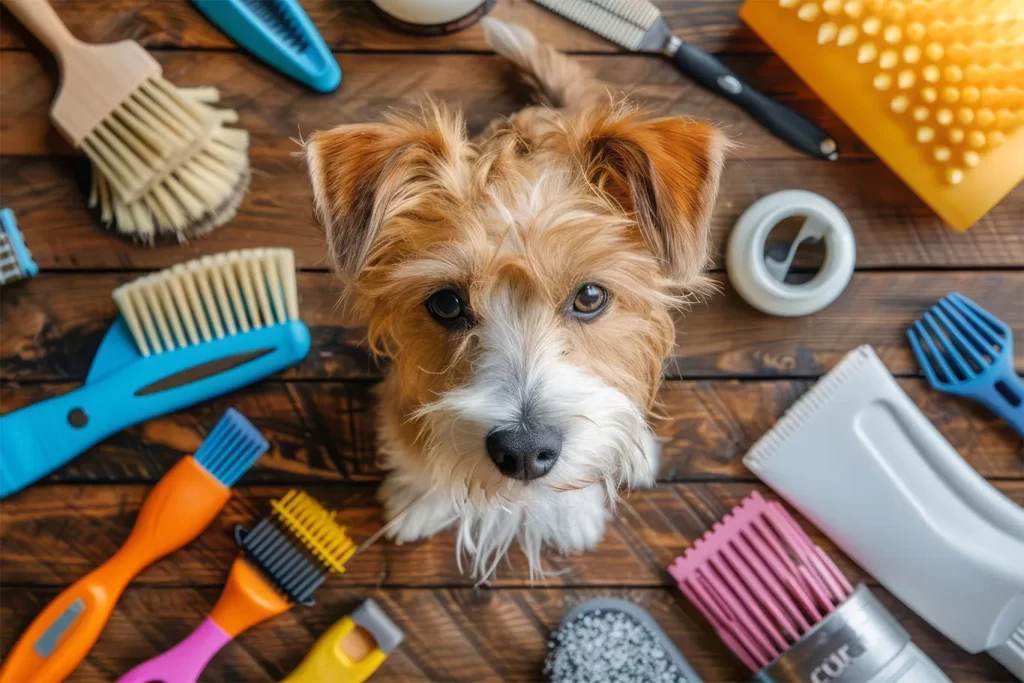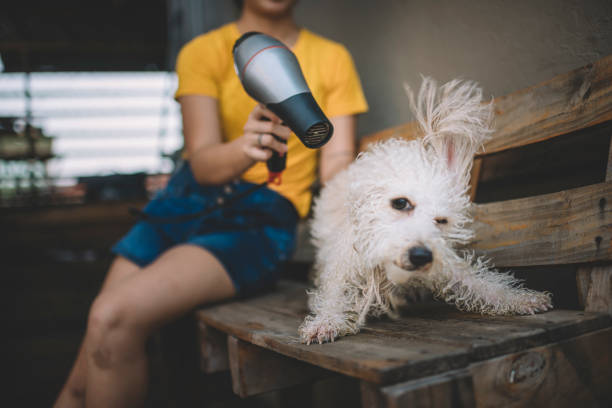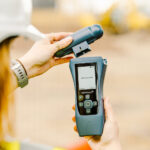Proper grooming is an essential aspect of responsible pet ownership, ensuring the well-being, hygiene, and overall appearance of our furry companions. A well-groomed pet not only looks and feels better but also enjoys improved health and comfort. To achieve this, having the right grooming tools is crucial. These tools are designed to make the grooming process easier, more efficient, and less stressful for both the pet and the owner.
Grooming tools serve various purposes, from detangling and removing loose hair to trimming nails and maintaining healthy coats. With the right tools, pet owners can prevent matting, reduce shedding, and keep their pets looking their best. Additionally, regular grooming allows owners to inspect their pets for any potential health issues, such as skin irritations, lumps, or parasites, enabling early detection and treatment.
Investing in high-quality grooming tools is a wise decision for pet owners who prioritize their pets’ well-being and want to establish a positive grooming experience. These tools not only make the grooming process more manageable but also contribute to strengthening the bond between pets and their owners through regular, gentle interactions.
Table of Contents
Brushes and Combs
Proper brushing and combing are essential for maintaining a healthy coat and preventing matting and tangles in pets. Different types of brushes and combs are designed to cater to various coat types and grooming needs.
Slicker Brushes: These brushes feature a flat pad with fine, short wires angled to remove loose hair and smooth the topcoat. Slicker brushes are ideal for pets with medium to long coats, such as dogs with double coats or long-haired cats. They help untangle knots and remove loose undercoat hair.
Pin Brushes: Pin brushes have widely spaced, long bristles that gently glide through the coat, making them suitable for pets with longer, silkier coats. They are excellent for detangling and adding shine to the coat while distributing natural oils evenly.
Undercoat Rakes: These grooming tools have closely spaced, sharp teeth designed to penetrate deep into the undercoat and remove loose, dead hair. Undercoat rakes are essential for double-coated breeds like Huskies, German Shepherds, and Maine Coon cats, helping to reduce shedding and prevent matting.
Bristle Brushes: Bristle brushes come in various bristle types (natural or synthetic) and stiffness levels. Soft bristle brushes are gentle on the skin and suitable for short-haired pets, while stiffer bristles are better for removing loose hair and smoothing the coat on medium to long-haired pets.
Grooming Combs: Combs come in different tooth spacing and lengths to accommodate various coat types. Wide-tooth combs are ideal for detangling long coats, while fine-tooth combs are better suited for short-haired pets, helping to remove loose hair and distribute oils evenly.
Regular brushing and combing not only keep your pet’s coat looking its best but also promote healthy skin and circulation, reduce shedding, and strengthen the bond between you and your furry companion.

Clippers and Trimmers
Clippers and trimmers are essential grooming tools for trimming and shaping a pet’s fur. They come in various sizes and blade types to cater to different grooming needs. Clippers are typically used for full-body trimming, while trimmers are better suited for precise detailing and finishing work.
Blade types vary in their cutting lengths, ranging from very close cuts (30 blades or higher) to longer trims (4-7 blades). The higher the blade number, the shorter the cut. It’s crucial to choose the appropriate blade for the desired fur length and pet breed.
Safety is paramount when using clippers and trimmers. Always ensure the blades are sharp and well-maintained to prevent tugging or discomfort for the pet. Additionally, use caution around sensitive areas like the face, ears, and paws. It’s recommended to have a firm but gentle grip on the pet and work in the direction of hair growth to avoid nicks or cuts.
Clippers and trimmers should be used with care, especially on squirmy pets or those with thick or matted fur. Take breaks as needed and never force the tools through tangled hair, as this can cause injury or damage the equipment. Proper grooming technique and patience are essential for a successful and stress-free grooming experience for both you and your furry friend.
Nail Clippers and Grinders
Trimming your pet’s nails is an essential part of grooming and overall health maintenance. Overgrown nails can cause discomfort, pain, and even lead to mobility issues or infections. Proper nail care not only keeps your furry friend comfortable but also prevents scratches on furniture and floors.
There are various types of nail clippers and grinders available, each suited for different pet sizes and nail thicknesses. Scissor-style clippers are popular for small to medium-sized pets, while guillotine-style clippers are better suited for larger breeds with thicker nails. Electric nail grinders are also a great option, as they allow for a more controlled and gradual trimming process.
When trimming your pet’s nails, it’s crucial to exercise caution and avoid cutting into the quick (the pink area containing blood vessels and nerves). Start by familiarizing your pet with the process, offering treats and positive reinforcement. Trim a small amount at a time, and if you’re unsure, it’s better to leave the nails a little longer than to risk cutting into the quick, which can be painful and cause bleeding.
For a stress-free experience, choose a quiet and well-lit area, and consider using a pheromone diffuser or calming supplements to help your pet relax. Regularly trimming your pet’s nails not only keeps them comfortable but also strengthens the human-animal bond through positive reinforcement and trust-building.
Grooming Tables and Restraints
Grooming tables and restraints are essential tools for professional groomers and pet owners who groom their furry companions at home. These tools not only make the grooming process more efficient but also ensure the safety of both the pet and the groomer.
Grooming tables are elevated surfaces that allow groomers to work at a comfortable height, reducing strain on their backs and providing better access to the pet’s coat. They are typically made of sturdy materials like stainless steel or heavy-duty plastic, with a non-slip surface to prevent accidents. Many grooming tables feature an adjustable arm or loop leash to secure the pet in place, preventing them from jumping off the table.
Restraints, such as grooming nooses or loops, are designed to gently hold the pet in position during grooming. These tools are particularly useful for wiggly or anxious pets, as they prevent sudden movements that could lead to injuries. Restraints come in different sizes and materials, such as nylon or leather, to accommodate various breeds and sizes.
When choosing a grooming table and restraints, consider the size and weight of your pet, as well as the grooming tasks you’ll be performing. For larger or heavier pets, opt for a sturdy table with a weight capacity that can accommodate them comfortably. If you plan to groom multiple pets, an adjustable table that can accommodate different heights may be a wise investment.
Additionally, consider the portability of the grooming table if you plan to use it in different locations or take it to pet shows or competitions. Folding or collapsible tables can be a convenient option for those with limited space or frequent travel.
Using grooming tables and restraints not only ensures a safer and more efficient grooming experience but also helps to minimize stress for both the pet and the groomer. By keeping the pet secure and at a comfortable working height, groomers can focus on providing the best possible care without worrying about sudden movements or awkward positions.
Bathing Supplies
Bathing your pet is an essential part of grooming, and having the right supplies can make the process much easier and stress-free for both you and your furry friend. Here are some essential bathing supplies you’ll need:
Shampoos and Conditioners: Choose a high-quality, pH-balanced shampoo and conditioner specifically formulated for your pet’s breed and coat type. Avoid using human shampoos, as they can strip your pet’s coat of natural oils and cause irritation.
Brushes: A slicker brush or a rubber curry brush can help loosen dirt and distribute shampoo evenly throughout your pet’s coat during the bathing process.
Towels: Invest in some thick, absorbent towels to dry your pet after bathing. Microfiber towels are particularly effective at soaking up moisture and reducing drying time.
Dryers: A high-velocity dryer or a forced-air dryer can significantly reduce drying time and help straighten and smooth your pet’s coat. These dryers are particularly useful for double-coated breeds or pets with thick, long hair.
Non-slip Mats: Place a non-slip mat or rubber matting in the bathing area to prevent accidents and provide traction for your pet during the bathing process.
Treats and Toys: Positive reinforcement can go a long way in making bath time a pleasant experience for your pet. Have some treats and toys on hand to reward good behavior and make the process more enjoyable.
When bathing your pet, it’s essential to create a calm and stress-free environment. Start by brushing your pet thoroughly to remove any loose hair and dirt before the bath. Use lukewarm water and gently massage the shampoo into your pet’s coat, being careful to avoid their eyes, ears, and nose. Rinse thoroughly to remove all soap residue, and then towel-dry before using a dryer, if necessary. With the right supplies and a positive attitude, bath time can be a bonding experience for you and your furry companion.
Ear and Eye Care Tools
Proper ear and eye care is crucial for maintaining your pet’s overall health and well-being. Neglecting these sensitive areas can lead to infections, discomfort, and potential long-term issues. Fortunately, there are various grooming tools designed specifically for cleaning and grooming your pet’s ears and eyes.
Ear cleaners are essential tools for removing excess wax, dirt, and debris from your pet’s ear canals. These solutions are formulated to be gentle and effective, helping to prevent ear infections and odors. They often come with soft, absorbent pads or cotton balls for easy application.
Eye wipes are another important grooming accessory. These gentle, moisturized pads are used to gently clean away tear stains, discharge, and gunk that can accumulate around your pet’s eyes. Regular use of eye wipes can help prevent irritation, staining, and potential eye infections.
In addition to cleaners and wipes, you may also find specialized grooming tools like ear powder and ear pluckers. Ear powder helps absorb excess moisture and wax, while ear pluckers are used to safely remove any loose hair from the ear canal, which can contribute to buildup and discomfort.
When using ear and eye care tools, it’s essential to follow the manufacturer’s instructions carefully and exercise caution to avoid causing harm or discomfort to your pet. Regular grooming and maintenance of these sensitive areas can go a long way in ensuring your furry friend’s overall health and comfort.
Deshedding Tools
Shedding is a natural process for pets, but excessive shedding can lead to matted fur, hairballs, and a messy living environment. Deshedding tools are designed to remove loose hair from your pet’s coat, reducing shedding and keeping their fur healthy and shiny. These tools come in various forms, including deshedding brushes, rakes, and shedding blades.
Deshedding brushes are among the most popular tools for managing shedding. They feature stiff bristles or metal teeth that effectively remove loose hair from the undercoat without damaging the topcoat. These brushes are gentle on your pet’s skin and can be used on dogs and cats with different coat types.
Deshedding rakes, also known as shedding blades or shedding knives, are another effective tool for removing loose hair. These tools have a row of closely spaced metal teeth that penetrate deep into the undercoat, efficiently removing loose hair and reducing shedding. Deshedding rakes are particularly useful for pets with thick, double-coated fur, such as Huskies, German Shepherds, and Maine Coon cats.
Shedding blades are similar to deshedding rakes but feature a single, curved blade instead of multiple teeth. These tools are designed to gently remove loose hair from the topcoat and undercoat, leaving your pet’s fur smooth and shiny. Shedding blades are often preferred for pets with shorter or finer coats, as they can be more gentle than deshedding rakes.
Using deshedding tools regularly can provide numerous benefits for your pet. It helps reduce the amount of loose hair in your home, minimizing the need for frequent vacuuming and cleaning. Additionally, deshedding tools can help prevent matting and tangling, which can lead to skin irritations and discomfort for your pet. Regular deshedding also promotes healthy skin and coat by removing dead hair and distributing natural oils throughout the fur.
When using deshedding tools, it’s important to follow proper techniques and be gentle with your pet. Always brush in the direction of hair growth and avoid applying too much pressure, as this can cause discomfort or damage to your pet’s skin. It’s also recommended to introduce deshedding tools gradually and make the grooming experience positive and enjoyable for your pet.
Grooming Bag and Organizers
Having a dedicated grooming bag or organizer is essential for keeping all your pet grooming tools neatly stored and easily accessible. These specialized bags and organizers are designed to accommodate various grooming tools, ensuring that everything you need is within reach and well-organized.
A grooming bag typically features multiple compartments and pockets to separate and store different types of tools, such as brushes, combs, clippers, scissors, and nail trimmers. This organization not only prevents tools from getting tangled or misplaced but also helps protect them from damage during transport.
Grooming organizers, on the other hand, are often designed for stationary use, providing a convenient way to keep your grooming station tidy and efficient. These organizers can be freestanding units or wall-mounted shelves, offering designated spaces for each tool, making it easy to grab what you need without rummaging through cluttered drawers or countertops.
When choosing a grooming bag or organizer, consider factors such as size, durability, and ease of cleaning. Look for bags or organizers made from water-resistant materials that can withstand the occasional spill or splash during grooming sessions. Additionally, opt for designs with sturdy handles or straps for comfortable carrying, especially if you plan to groom your pet in different locations.
Investing in a high-quality grooming bag or organizer can significantly streamline your grooming routine, saving you time and frustration while ensuring that your tools are always within reach and well-maintained.
Grooming Tool Maintenance and Care
Proper maintenance and care of your grooming tools are essential to ensure their longevity and effectiveness. Here are some tips to keep your tools in top condition:
Cleaning and Sanitization
- Brushes and combs: After each use, remove any loose hair or debris from the bristles or teeth. Soak them in a solution of warm water and mild soap or pet-safe disinfectant. Rinse thoroughly and allow to air dry completely before storing.
- Clippers and trimmers: Remove hair from the blades after each use. Use a brush or compressed air to dislodge any stuck hair. Lubricate the blades with a few drops of clipper oil to prevent rust and maintain sharpness.
- Nail clippers and grinders: Wipe down the blades or grinding surfaces with a pet-safe disinfectant after each use. Ensure they are completely dry before storing.
- Grooming tables and restraints: Clean the surfaces with a pet-safe disinfectant and let them air dry. Avoid using harsh chemicals that could damage the material or leave residues.
Storage
- Store grooming tools in a dry, cool place, away from direct sunlight and moisture.
- Use a grooming bag or organizer to keep tools separated and protected from damage.
- Wrap cords neatly to prevent tangling and fraying.
- Store blades and sharp edges in protective covers or sheaths.
Maintenance
- Sharpen dull blades or replace them when necessary for optimal performance.
- Lubricate moving parts regularly according to the manufacturer’s instructions.
- Check for loose screws, worn parts, or damage, and repair or replace as needed.
- Follow the manufacturer’s recommendations for cleaning and maintenance to ensure the tools’ longevity and safety.
By following these simple steps, you can extend the life of your grooming tools and ensure they work effectively and safely for your pet’s grooming needs.



